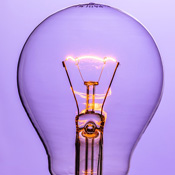Patent Lawyer in Toronto, Registered Patent & Trademark Agent
Located in Toronto (Etobicoke), and with over 31 years of experience, I'm an expert in patent, trademark, copyright and intellectual property law. What ever your issue is there's a good chance I've dealt with it before and can solve your problem.
Latest Article: Moral Rights in Copyright
Consultations and meetings are conducted virtually for your safety and security.
I operate the office virtually. Consultations are held virtually over the phone or through Zoom meetings. Everything discussed is covered by a compresensive confidentiality agreement which I sign and send to you before the meeting.
Atricle: Market and Sell Your Invention
Intellectual Property Services
We provide a full range of IP legal services, including:- Patent searchs for inventions.
- Trademark searches for trade names, business names, logos, slogans and other trademarks.
- Trademark registrations (Canada & USA)
- Preparing, filing and processing of patent applications in Canada, the United States and world wide.
- Patent, trademark and copyrignt legal actions/disputes including patent and trademark infringement.
- Preparing and negotiang the terms of license agreements for patents, inventions and trademarks.
- Provide legal opinions on patent and trademark infringement and validity.
- Provide legal advice on how to maximize the value of your intellectual property assets.
- Provide prompt and professional services.
- Provide you with practical advice to protect your rights.
Let's Move Your Project Forward
This is what we can do:- Give you basic information as to what your rights might be and what steps you need to take to protect your rights.
- Meet with you "face to face" to discuss what intellectual property issues you have, and what your concerns are. Everything we talk about is held in the strictest confidence.
- Review your idea to determine which are the best ways to protect as many aspects of your invention as possible.
- Conduct a patent and/or trademark search to determine the kinds of difficulties you might face trying to protect and enforce your rights.
- Give you a written cost estimate as to the costs of proceeding with protecting your intellectual property rights.
- Give you information on strategies for finding funding and investment.
Information on Patents, Trademark, Copyright and Industrial Designs
Atricles and information by Elias Borges
This web site has a wealth of free information on all aspects of intellectual property law, including articles and videos on topics such as:
- Patents
- How to Protect Your Invention - The Inventor's Journal
- Trademarks
- Copyright
- Designs
- Licensing
- Litigation
- Invention Marketing
- Protecting 3D designs of products
- Patent Tips
- Trademark Tips
- Avoiding Patent Scams
- Video - How to Protect 3D Designs
- How to Reply to a Patent Infringement Letter
- Patent Issues for Startups - 5 Easy Steps to Protect Your Starup
- How to Protect Your Invention - Dealing with Employees and Contractors
- Method Patents, Business Method Patents, Machine or Transformation Test
- 5 Steps to Kickstarter / Crowdfunding Protection
- The Non-Disclosure Agreement (NDA)
- Copyright in Memes - How to Avoid Copyright Infringement
- Method Patents, Business Method Patents, Machine or Transformation Test
- 5 Steps to Kickstarter / Crowdfunding Protection
- Patent Trolls
- Literal v. Non-Literal Patent Infringement
- Trademark Applications in Canada - Recent Changes to the Law
- Weaponized Moral Rights in Copyright
- Utility Models - Towards a New Form of Intellectual Property Protection
- Copyright in AI Works and Products
- Information for CEOs and Business owners on how to protect intellectual property, minimize legal costs and avoid disputes
- See our latest articles and videos
Please take the time to check out the articles and videos on this web site. Here is some quick information which you can use to better tailor your search for answers.
Quick Intellectual Property Information:
- Patents: Patents are a type of intellectual property that protects inventions. A patent is essentially a grant from the government that gives the patent owner the exclusive right to make, use or sell the patented invention for a period of twenty years from the date the patent was applied for. Patents apply to inventions such as a new device, a new method or a new material. Go to our patent information page for more detailed information about patents.
- Trademarks: Trademarks include trade-names, logos, and slogans which identify a company's goods and services and which distinguishes that company from its competitors. A trademark can be a name or word(s), a graphical image (called a logo or design mark), a sound, a series of musical notes or even a particular three dimensional appearance. A registered trademark is a trademark that has been registered with the government. A registered trademark protects the owner of the mark from competitors who might use a confusingly similar mark. Go to our trademark information page for more detailed information about trademarks.
- Copyright: Copyright is quite literally, the right to make copies of a work. A copyrightable work is any literary or artistic work and includes books, web site articles, photographs, sound recordings, music, software, screen plays, sculptures, written forms and movies. Copyright is usually owned by the author of the work and copyright subsists for the life of the author plus fifty years. Go to our Copyright information page for more detailed information about copyright.
- Industrial Designs: An industrial design (also called a design patent) is a type of intellectual property which protects the aesthetic appearance of an object. Usually, an industrial design is the decorative three dimensional design of a useful article such as a chair, a flower pot or a lamp. New and unique designs can be registered to give the owner of the registered design the exclusive right to copy the design. An industrial design only protects the decorative look of the design: it does not protect any utilitarian features of the design. Go to our Design information page for more detailed information on industrial designs.
- Litigation: Litigation is the art (science) of bringing, prosecuting or defending against a legal action (law suit). Litigation is a complex area of law which is best handled by an experienced litigation lawyer. Intellectual Property Litigation is a specialized form of litigation which deals with the unique set of laws relating to intellectual property. Go to our Litigation information page for more detailed information about intellectual property litigation.
- Intellectual Property: Intellectual Property is a general term referring to a variety of non-tangible, but often very valuable, property. Intellectual property includes patents, trademarks, copyright, industrial designs, trade secrets, plant breeders' rights, and integrated circuit topographies. Intellectual property rights often overlap and a single product can be "covered" by several types of intellectual property protection. For example, a new product may be protected by a patent, its name could be protected by a trademark and the software that makes it work can be protected by copyright.
- Invention: An invention is defined as a new and unobvious device, process, method or "composition of matter" (i.e. material) which does something useful. An invention may also be a new and unobvious improvement to an existing device, process, method or composition of matter. Common examples of inventions include: a new or improved machine, industrial process, chemical or plastic. To be new the invention must not have been publicly disclosed either by the inventor or by someone else. To be unobvious, the invention must contain at least a spark of creative effort. Go to our Patent information page to learn more about inventions and how they are protected.
- Logo: A logo is a type of trademark (called a design mark) which incorporates a graphical or visual element. Oftentimes, the logo consists of a word which is written in a stylized way using a unique or graphically appealing font. A logo can be protected as a registered trademark (design mark) by filing and prosecuting an appropriate trademark application. Go to our Trade-mark information page to learn more about the process of registering a trademark.


